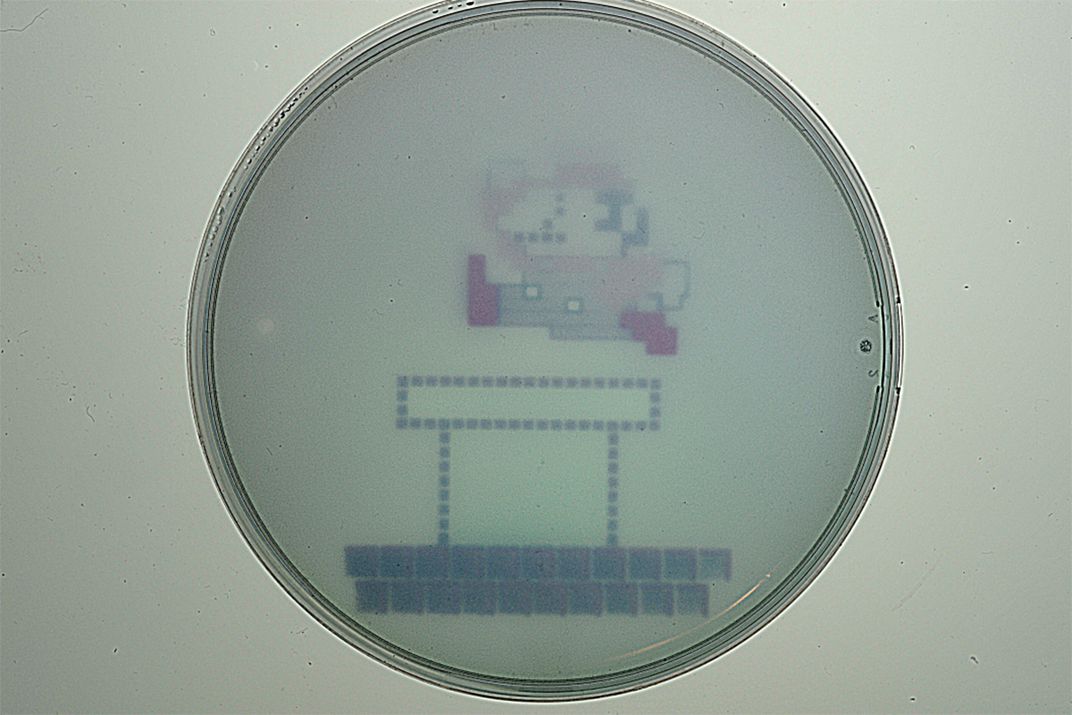Researchers Create Color Images With Bacteria
The art is done by inserting 18 genes into E. coli
/https://tf-cmsv2-smithsonianmag-media.s3.amazonaws.com/filer/32/04/320476c7-a4e4-41a9-9b3f-30e5e66db615/lizards.jpg)
Human artists have been under assault for years. Not only do they have to contend with elephant, cat, and robot artists, now they are up against bacterial artists. According to Andy Coghlan at New Scientist, researchers at MIT have engineered E. coli bacteria that produce color when hit with certain wavelengths of light, allowing them to produce images.
Coghlan reports that the researchers inserted 18 genes into the bacteria that cause them to produce color pigments that match the light striking them after about eight hours of exposure. Ryan F. Mandelbaum at Gizmodo reports that in essence, they made each bacterium into a teeny tiny computer that receives light and outputs color.
The project is the next step in a similar project the team worked on in 2005, when they inserted four genes into the bacteria to produce black-and-white images, reports Adam Levy at Nature. This new project goes way beyond that in terms of complexity.
Felix Moser, one of the authors of the study in the journal Nature Chemical Biology, admits that there probably isn’t a huge market for art or images created by bacteria. “The bottom line is that this is a demonstration of how far synthetic biology has come in terms of engineering biological systems,” he tells Mandelbaum.
In fact, the technology could be used for other purposes. Instead of producing color when exposed to light, in the future the bacteria could produce other proteins and perhaps build things like artificial organs or pharmaceuticals reports Coghlan.
As for the current artwork created by the process, true artists don’t need to worry. So far, the researchers have created images of piles of fruit and an image of Super Mario. But the art may get better—Coghlan reports that with the addition of more “circuitry” the researchers could begin producing intermediate shades of color and even finer detail.
